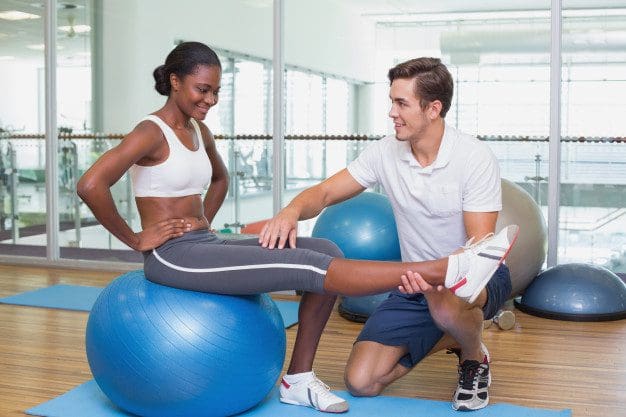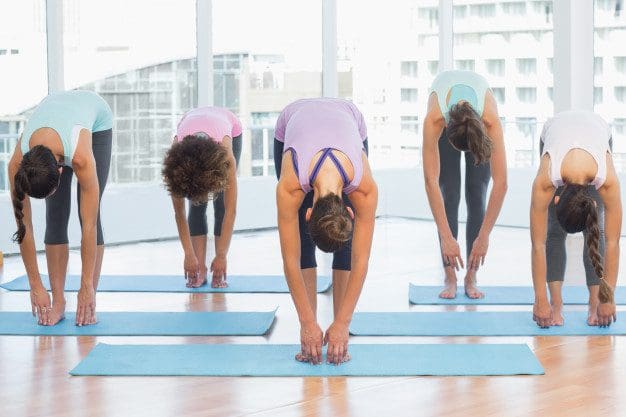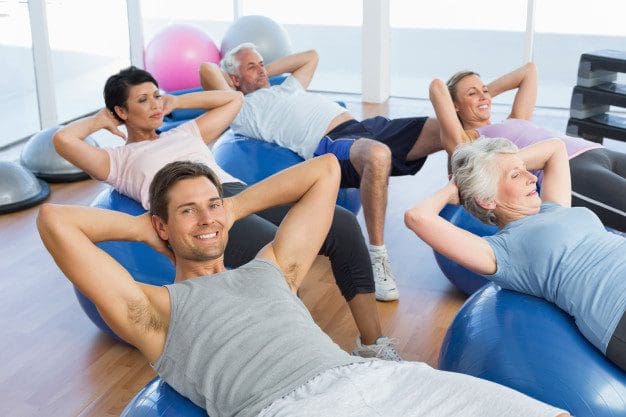Mobility & Flexibility
Table of Contents
Mobility & Flexibility: Living Free & Feeling Life…
Mobility Flexibility: The human body retains an individual, natural movement level to ensure all of its structures are functioning properly. The body requires that bones, muscles, ligaments, tendons, and other tissues work together to allow a range of movement. Maintaining proper fitness and balanced nutrition can help keep the body functioning properly. According to Dr. Alex Jimenez’s compilation of articles on mobility and flexibility, individuals who don’t stretch their body often can experience shortened or stiffened muscles, decreasing their ability to move effectively.
As a part of chiropractic care treatment, it’s essential for individuals who frequently suffer from joint and/or muscle pain due to direct trauma from an injury or an underlying condition to continue keeping their bodies as flexible as possible. People who often work out to maintain or improve their flexibility are actually at a lower risk of experiencing an injury or aggravating a condition. According to chiropractic, the best way for individuals to control their flexibility is to stretch before starting any physical activity.
Flexibility: Refers to the length of a muscle and what most think of when improving range of motion. It is addressed through stretching; however, it is part of overall mobility.
Mobility: Refers to how freely a joint can move through its full range of motion. Muscle length (flexibility), muscle tension/ tissue quality, and how the nervous system controls the joint. Foam rolling and massage to address muscle tension/ tissue quality. Stretching addresses muscle length, and dynamic mobility and corrective exercises address the nervous system. And all are needed for optimal joint mobility.
Stability: A joint that can get into proper alignment so that the bones take most of the stress will be more stable than a joint that can’t, which requires the connective tissues to take more stress. When lacking adequate mobility, then the body compensates by using muscles, tendons, and ligaments to take up the slack. Once the joints are lined up properly, then the bones will take the stress.
An example of this is tight hamstrings and attempting to increase their flexibility by stretching them. Most of the time, the hamstrings aren’t really the problem. It is a lack of mobility from the hips that causes the hamstrings to tighten up to make up for the lack of stability. Once hip mobility is resolved, the hips will get into better alignment, and then the hamstrings will relax.
Causes: Limited/Restricted Range Of Motion
 Medical Conditions
Medical Conditions
Medical conditions associated with a limited range of motion include:
- ankylosing spondylitis, which is a type of arthritis that primarily affects the spine
- osteoarthritis, which is the most common form of arthritis related to older age and wear and tear of the joints
- rheumatoid arthritis (RA), an autoimmune form of arthritis caused by your immune system attacking your joints
- juvenile RA, which is an autoimmune form of arthritis that occurs in children under the age of 16 years
- cerebral palsy, a group of neurological disorders that causes muscle paralysis and loss of body control.
- Legg-Calve-Perthes disease, which is a disorder that causes the thighbone to die due to a lack of blood flow to the joint.
- sepsis of the hip and other joints, which is a bacterial infection of the joints
- a congenital form of torticollis, which is a stiff neck associated with muscle spasms
- syphilis, sexually transmitted infection
Other Causes
Other causes of a restricted range of motion:
- elbow fractures
- fractures in other areas of the body
- inflammation of the soft tissues surrounding the joint, or joint swelling
- joint dislocation
- muscle stiffness
- pain
- Stagnant lifestyle
- Sitting for long periods
Should I See A Doctor?
A doctor should be consulted about any reductions in the normal range of motion of the joints. Also, one should go to the doctor if an individual can’t fully straighten or bend one or more joints or if you’re having difficulty moving a certain joint.
People are not always aware of a limited range of motion. An individual may see a doctor for an unrelated reason and discover that they’re also experiencing a lack of mobility in one or more joints.
Complications Associated: Limited Range Of Motion
In some cases, the position of the joint may become permanently fixed. This means there is no longer moving in the joint past a given point. These are known as contracture deformities. Conditions associated with this include:
- Cerebral palsy
- Dupuytren’s contracture is a thickening of the tissue layer beneath the skin in the hands and wrist.
- Muscular dystrophy is an inherited disease involving muscle weakness
- Volkmann’s contracture is a lack of blood flow to the forearm, causing the muscles in the arm to shorten
Limited Range Of Motion: Diagnosis
The initial appointment will likely consist of a physical examination. This will include an assessment of the affected joints. The doctor may ask questions about your limited range of motion, for example:
- When did the problem first start?
- Are you experiencing discomfort?
- Where is the discomfort occurring?
- Are there any other symptoms?
A doctor may also assess the function of the bones, muscles, or nervous system. As a follow-up, a doctor may schedule some tests, i.e., X-rays of the spine and joints.
A doctor may recommend a course of physical therapy designed to enhance and improve the range of motion.
Contact: Physician Or Physical Therapist Before A New Workout Plan
They could help you establish realistic targets and create a plan that best suits your life. You may want to think about working with a personal trainer to assist you in easing into the brand new routine.

There are 3 primary parts of exercise: cardiovascular exercise, strengthening exercises, and flexibility training. The first 2 typically get more emphasis. Cardiovascular exercise (running, for example—anything which gets your pulse up) and strength training (lifting weights) come with some rather immediate outcomes. They help build muscle and lose weight, all the while helping us be more fit. It takes longer to see those advantages.
But here’s the deal: flexibility becomes more significant as you grow old. Being limber can help battle those aches and pains related to aging; stretching can help you maintain better joint health. It can also do those daily jobs—carrying groceries, going up and downstairs, etc., much easier.
However, you can’t wake up when you’re 64 and unexpectedly be equally adaptable as you were when you were 24. It’s much better and even more efficient to work flexibility training into your workout routine throughout your own life.
(Rest assured: if you are 64 and were hoping to regain some of that youthful flexibility, you can start working it in your workout routine now. Be realistic concerning the outcomes. You will, most likely, never be as flexible as you once were, but working on flexibility at any age is rewarding.)
Mobility Flexibility Training: More Than A Few Stretches
 After a run is, yes, better than nothing, doing a couple of hamstring stretches, but you won’t find as many long-term gains as you’d see from a more developed flexibility plan.
After a run is, yes, better than nothing, doing a couple of hamstring stretches, but you won’t find as many long-term gains as you’d see from a more developed flexibility plan.
To get the most benefit from mobility flexibility training, you should have a personalized program that considers your body and demands. As stated earlier, a personal trainer or physical therapist can help you develop the best plan for yourself.
And remember, the more time and attention you give to mobility flexibility training, the more gains you’ll see—especially those long-term gains.
Daily Actions: Take Notice
Think, also, about your daily life: does your job involve a lot of sitting or lifting?
A personalized mobility flexibility training program can help you enhance your freedom (how well your joints move) and stability (keeping good posture and body alignment during actions for your body isn’t under undue strain). It can allow you to excel in sports or your activities and help you pay good attention to your body daily.
Special Focus: Tight Muscles
The shoulders, chest, hamstrings, and hips are often tight, but you may find tightness in other regions depending on harm, pressure in your lifetime, or how rough a particular workout was. By tailoring your mobility flexibility training to your body, you’ll prevent overstretching muscles—or muscles that are lost that need consideration.
The Body Knows: What’s Best
 Listen to your body, and don’t push it too much when you’re stretching. Instead, ease into a stretch when you’ve reached the limit of what you can do at that point, and understand.
Listen to your body, and don’t push it too much when you’re stretching. Instead, ease into a stretch when you’ve reached the limit of what you can do at that point, and understand.
Also, you need to prevent ballistic stretches—that extending where you bounce in and out of the stretch. That strategy isn’t as successful as holding the stretch for about 10 to 30 seconds and then slowly stretching your muscles.
Creative Stretching:
Within the developed plan, you can use resistance balls, towels, or other props that’ll allow you to go deeper in your stretches. The assortment will also make you more likely to stay with your mobility flexibility training plan.
Stretching Requires A Warm Up:
You may be a bit confused—isn’t stretching a warmup? How do you warm-up for stretching? This is where a brisk walk or short jog can help: get your heart pumping and your muscles limber before stretching.
Flexibility Courses: Fitness Center
Assess your gym’s class program; they may have a few flexibilities or stretching classes. Sometimes these courses combine cardiovascular work, strength training, and flexibility work—all 3 parts of exercise in one class! Or you may take a class that’s exclusively focused on stretching.
Stretch The Mind:
Pilates and yoga are outstanding flexibility training. Yoga is extremely beneficial as it improves spine flexibility and relieves stress. Plus, they teach you about relaxation, meditation, and other head-body techniques—ways to help calm your body and emotions, which can, subsequently, make your body more receptive to being stretched.
Stretching: Significant For Everyone

Maybe you’ve got this bogus organization with extending—that only individuals in rehabilitation do it or that it’s only for individuals who aren’t actually in shape (that’s: it isn’t “real” exercise). Well, it’s time to go past that misconception. Everyone should stretch. Look for inspiration or proof at Olympic and professional athletes: they know that mobility flexibility training is a key section of peak performance.
Mobility Flexibility Training: It Must Be Consistent:
This isn’t something which you do for a few weeks and after that move on. It needs to be part of your routine for stretching to be as effective as possible. Regular stretching and flexibility work—along with cardiovascular exercise and strength training —will assist you in taking good care of your own body for years to come.
Limited Range of Motion Prevention:
Range of motion exercises specifically targets joint flexibility. Range of motion exercises can be done with a physical therapist, chiropractor, and a qualified fitness trainer. Your doctor or physical therapist can also tell you about exercises that you can easily do at home. These can help maintain and or improve joint flexibility along with overall freedom and ease of movement.
Three general categories of range of motion exercises:
- Active
- Active assistive
- Passive
You can do active exercises without the assistance of another person.
Active assistive exercises rely on your effort and the effort of another person. This other person is often a physical therapist. These exercises are helpful when it is painful to flex or extend the joint.
Passive exercises rely completely on the effort of the physical therapist or another individual. If you have a limited range of motion, you don’t do anything. These are typical when the person receiving treatment cannot perform the movements that are part of the range of motion exercise.
Practicing range of motion exercises can greatly increase mobility flexibility and ease of movement. However, always speak with your doctor before performing a range of motion exercise for the first time. Maintaining proper alignment and form is necessary to make sure there are no injuries.
Individuals who frequently suffer from joint and/or muscle pain are usually recommended to stretch in the morning and the evening. Adding a few simple stretches into a person’s daily workout routine can help any individual avoid many common injuries and maintain and improve mobility flexibility. However, before performing any physical activity, always make sure to consult a chiropractor to determine an appropriate set of stretches and exercises. For more information, please feel free to ask Dr. Jimenez or contact us at (915) 850-0900.
Injury Medical & Chiropractic Clinic: Non-Surgical Option
Check out Alex Jimenez DC, Injury Medical & Chiropractic Clinic on Yelp
Post Disclaimer
Professional Scope of Practice *
The information herein on "Mobility & Flexibility" is not intended to replace a one-on-one relationship with a qualified health care professional or licensed physician and is not medical advice. We encourage you to make healthcare decisions based on your research and partnership with a qualified healthcare professional.
Blog Information & Scope Discussions
Our information scope is limited to Chiropractic, musculoskeletal, acupuncture, physical medicines, wellness, contributing etiological viscerosomatic disturbances within clinical presentations, associated somatovisceral reflex clinical dynamics, subluxation complexes, sensitive health issues, and/or functional medicine articles, topics, and discussions.
We provide and present clinical collaboration with specialists from various disciplines. Each specialist is governed by their professional scope of practice and their jurisdiction of licensure. We use functional health & wellness protocols to treat and support care for the injuries or disorders of the musculoskeletal system.
Our videos, posts, topics, subjects, and insights cover clinical matters, issues, and topics that relate to and directly or indirectly support our clinical scope of practice.*
Our office has reasonably attempted to provide supportive citations and has identified the relevant research studies supporting our posts. We provide copies of supporting research studies available to regulatory boards and the public upon request.
We understand that we cover matters that require an additional explanation of how it may assist in a particular care plan or treatment protocol; therefore, to further discuss the subject matter above, please feel free to ask Dr. Alex Jimenez, DC, or contact us at 915-850-0900.
We are here to help you and your family.
Blessings
Dr. Alex Jimenez DC, MSACP, RN*, CCST, IFMCP*, CIFM*, ATN*
email: coach@elpasofunctionalmedicine.com
Licensed as a Doctor of Chiropractic (DC) in Texas & New Mexico*
Texas DC License # TX5807, New Mexico DC License # NM-DC2182
Licensed as a Registered Nurse (RN*) in Florida
Florida License RN License # RN9617241 (Control No. 3558029)
Compact Status: Multi-State License: Authorized to Practice in 40 States*
Presently Matriculated: ICHS: MSN* FNP (Family Nurse Practitioner Program)
Dr. Alex Jimenez DC, MSACP, RN* CIFM*, IFMCP*, ATN*, CCST
My Digital Business Card

